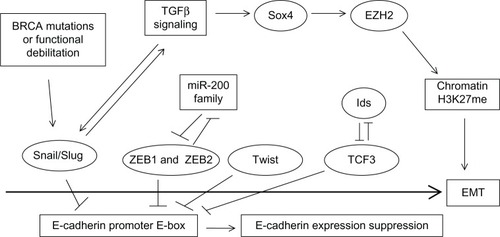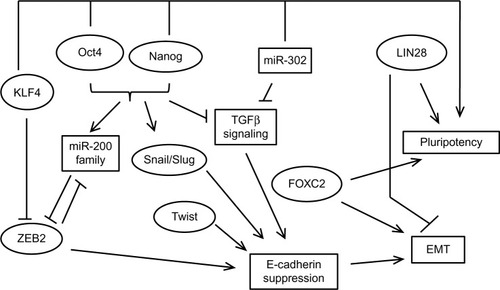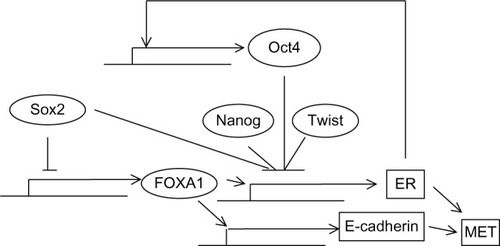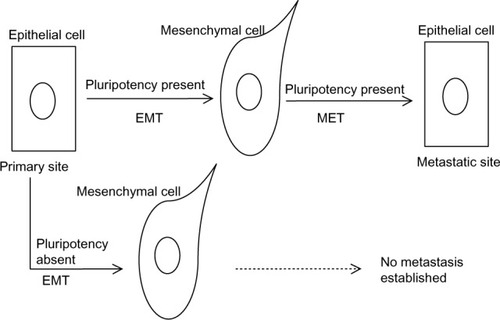Figures & data
Figure 1 Schematic representation of the cooperative action of pluripotency transcription factors on promoters of target genes.

Figure 2 The road to EMT.
Abbreviation: EMT, epithelial–mesenchymal transition.

Figure 3 An overview of the close relationship of the EMT and pluripotency networks.
Abbreviation: EMT, epithelial–mesenchymal transition.

Figure 4 Regulation of ER by pluripotency and EMT factors.
Abbreviation: MET, mesenchymal–epithelial transition.

Figure 5 A proposed model of the cooperation of pluripotency and EMT/MET processes in metastasis establishment.
Abbreviations: EMT, epithelial–mesenchymal transition; MET, mesenchymal–epithelial transition.

